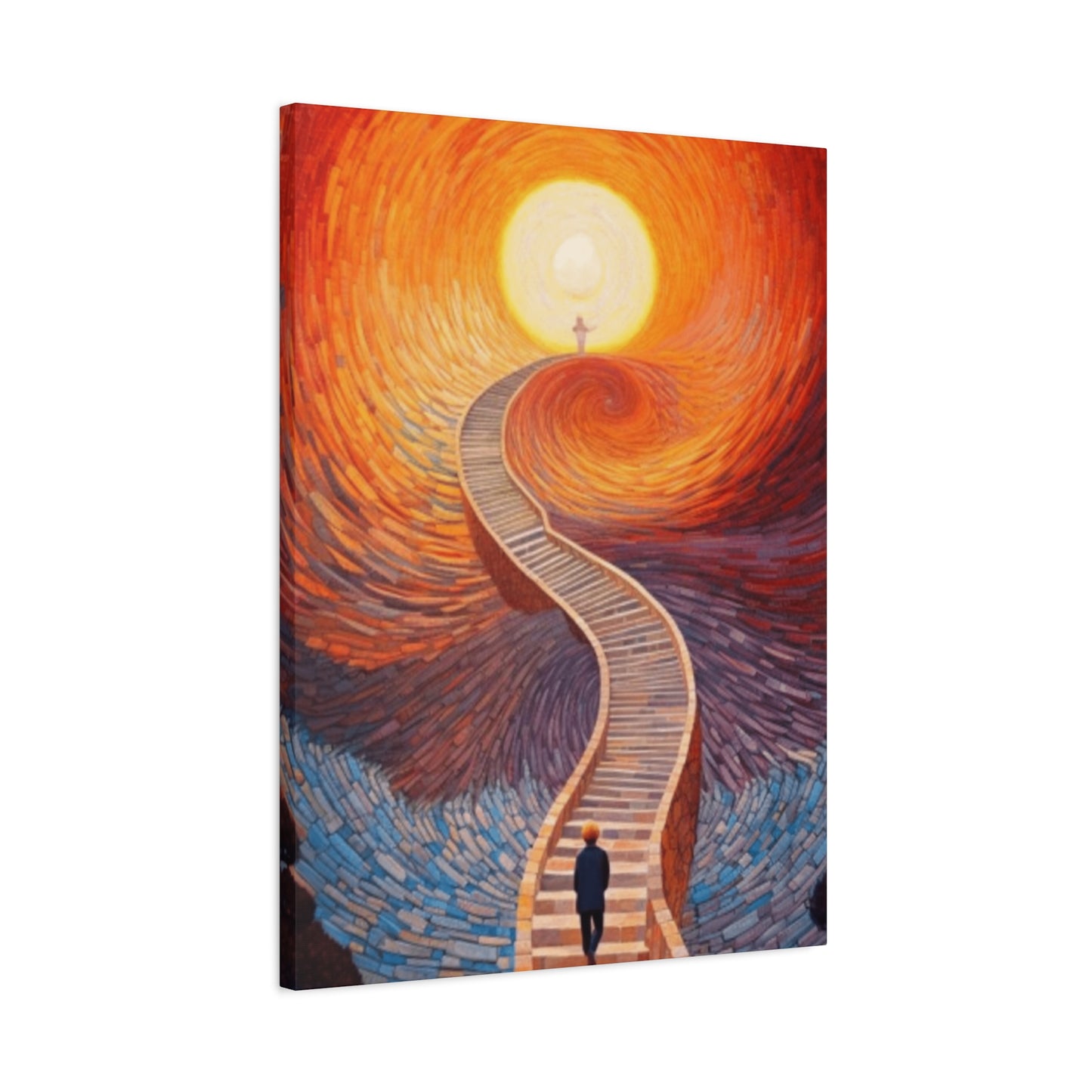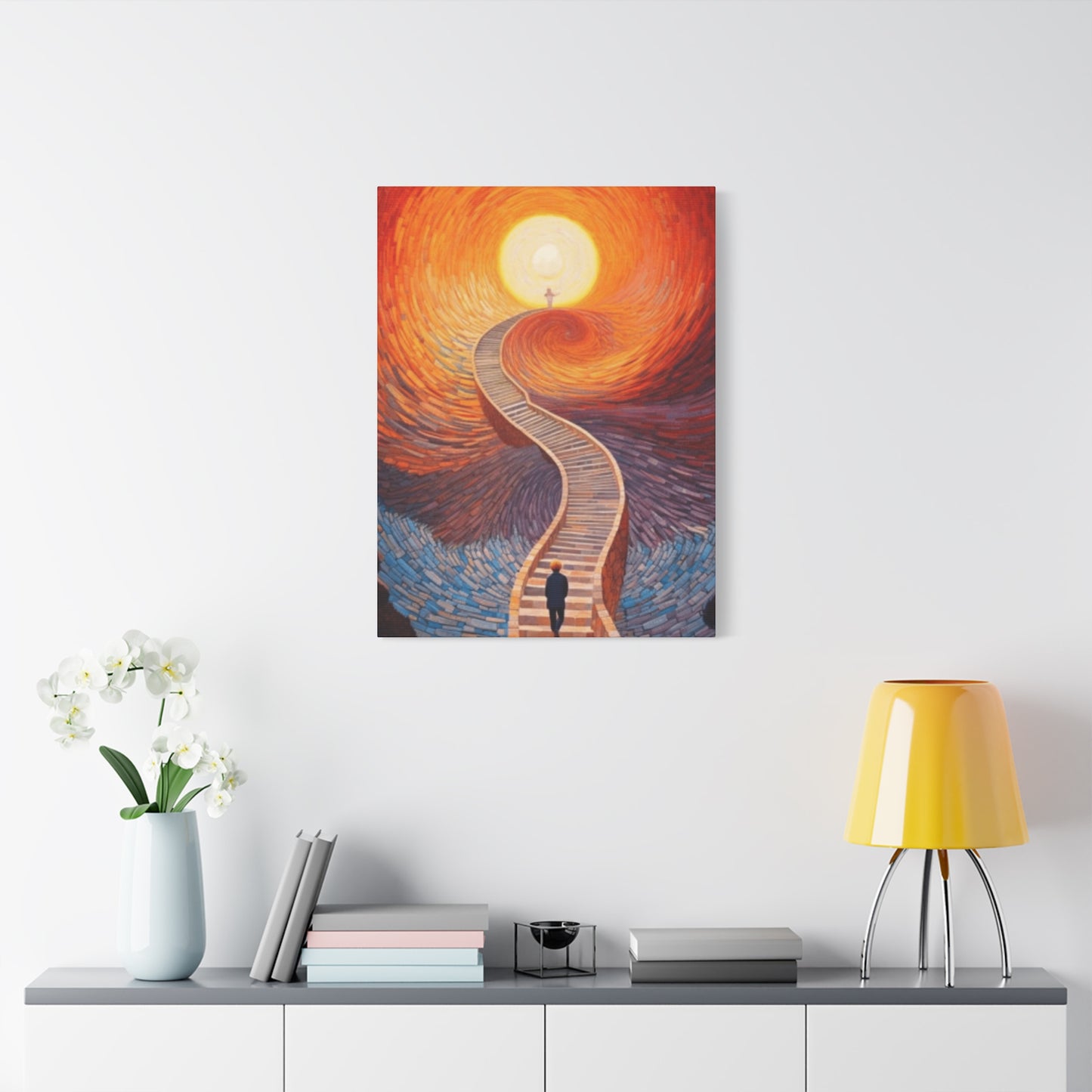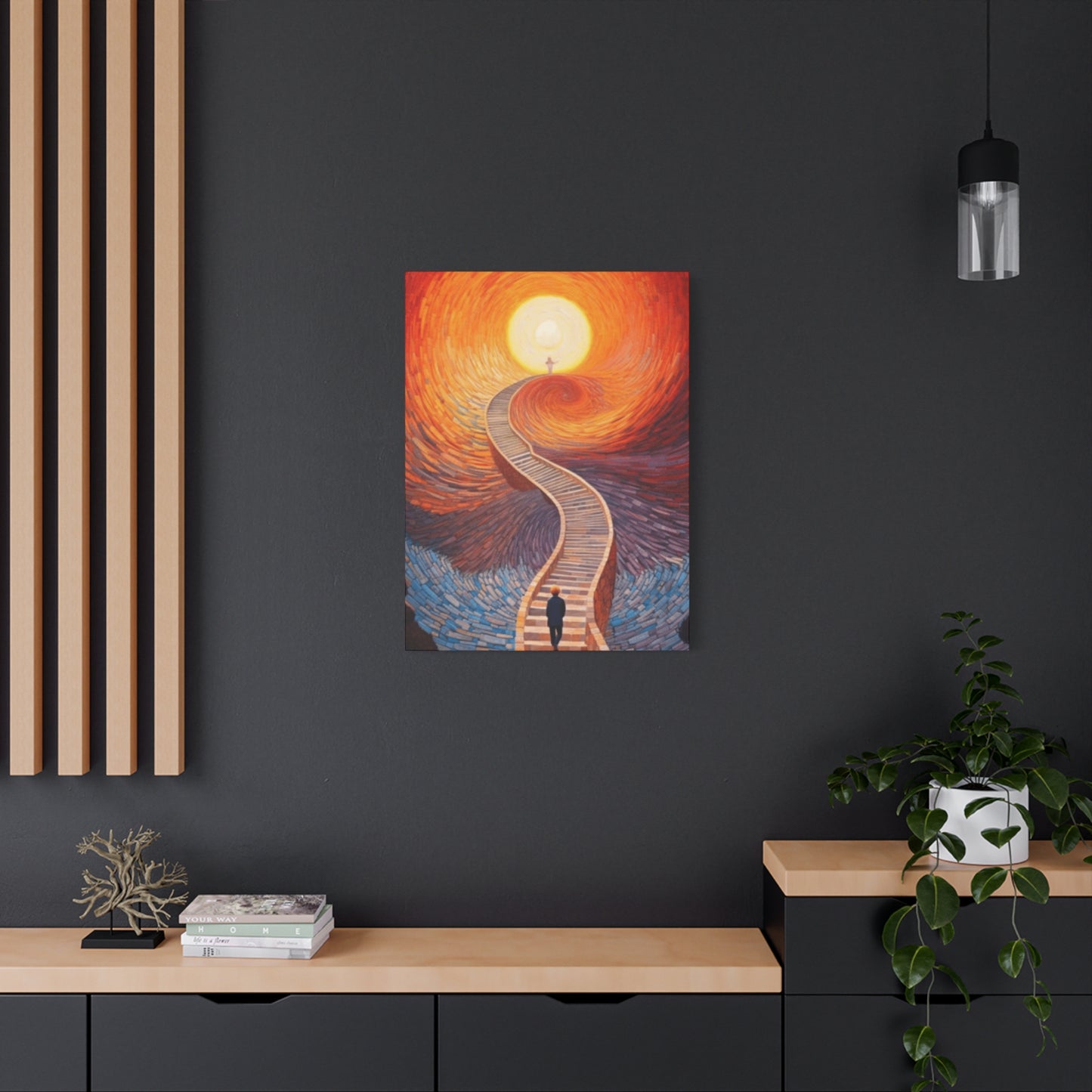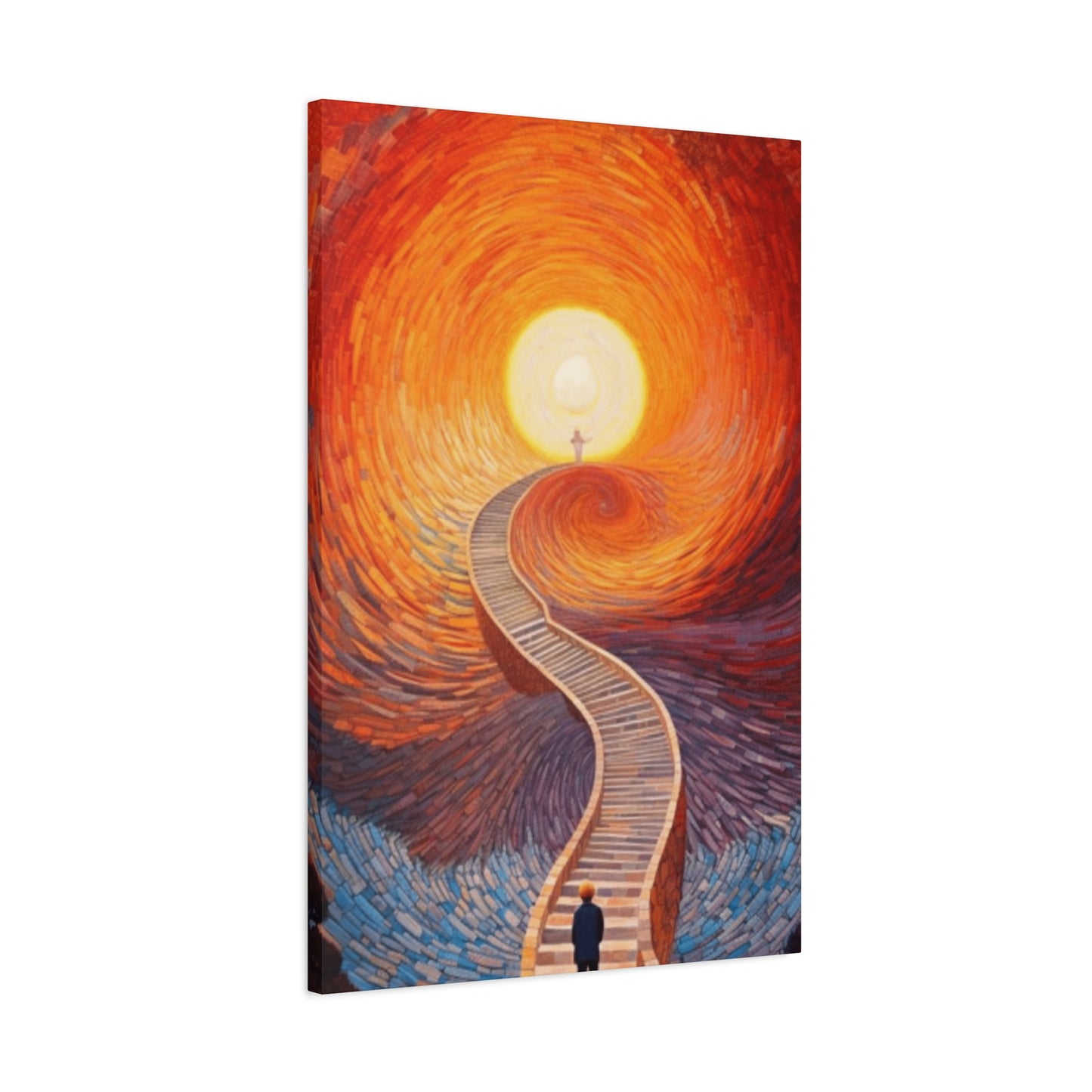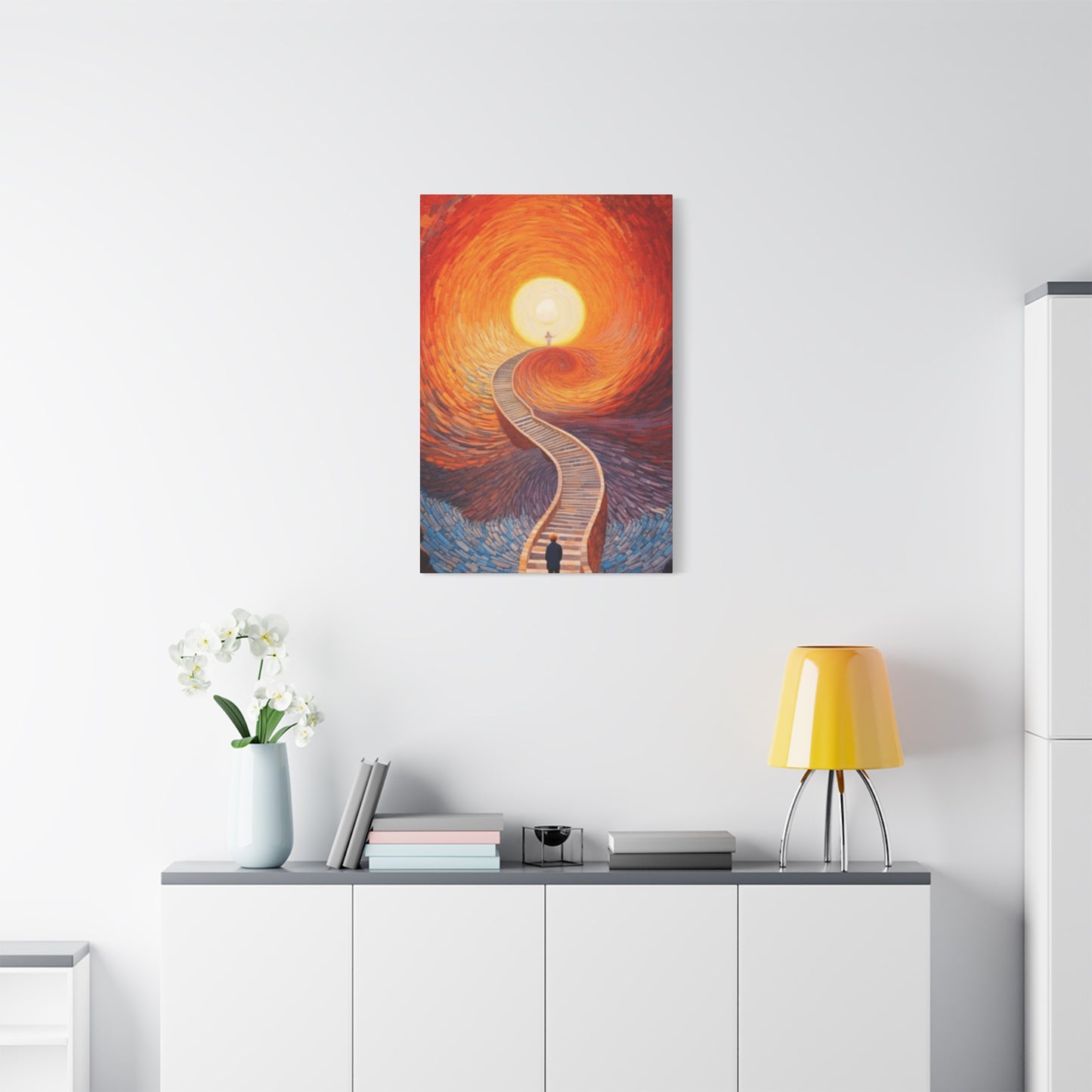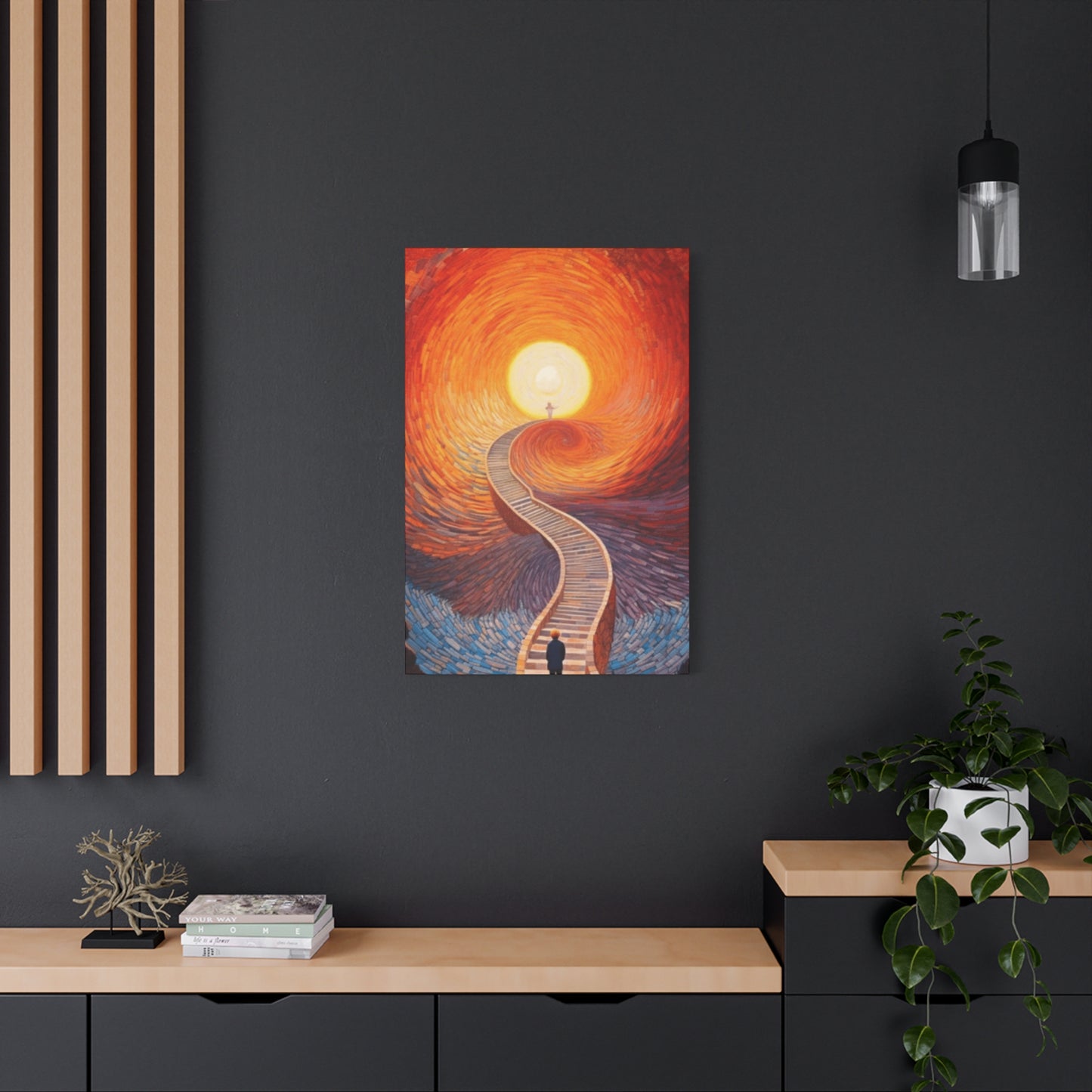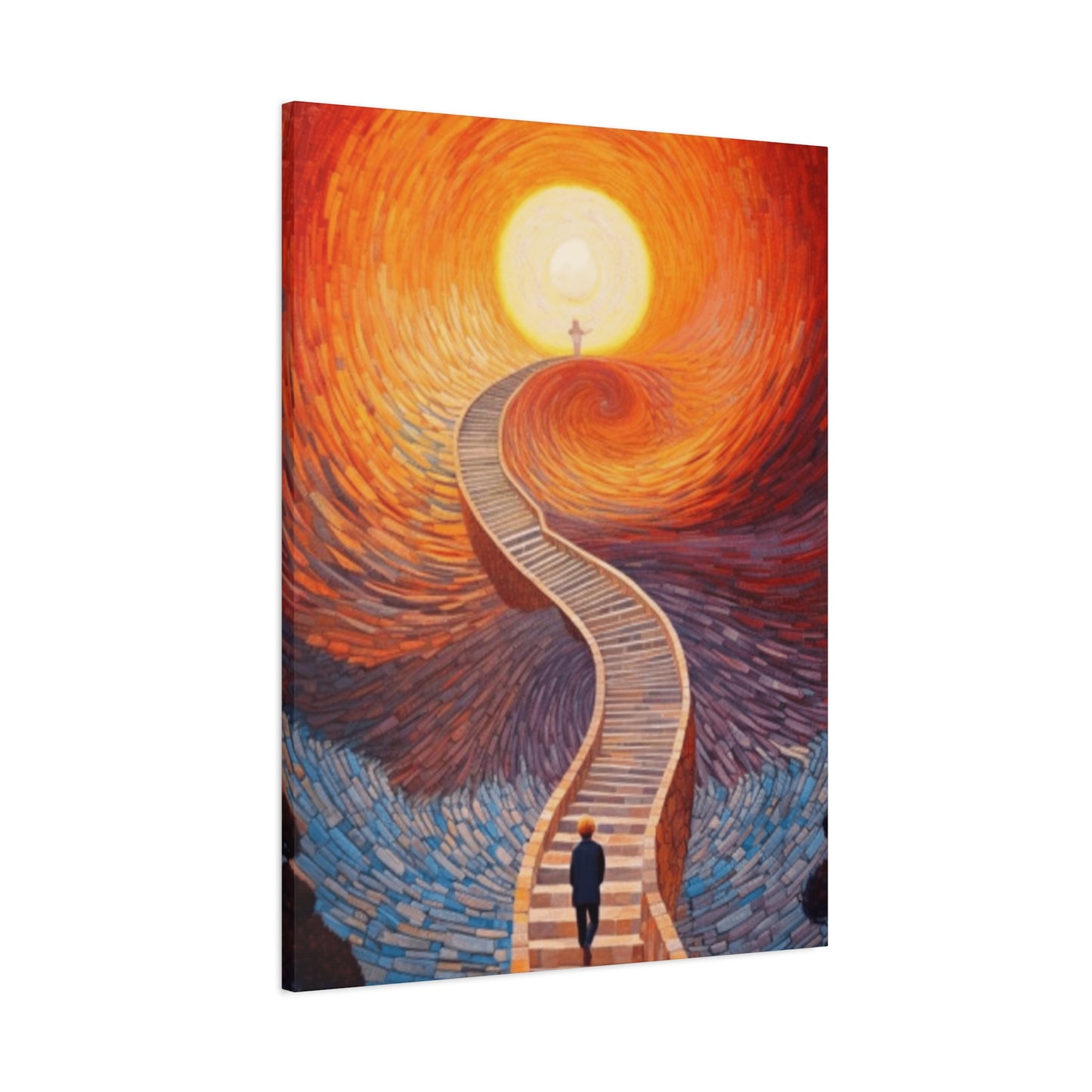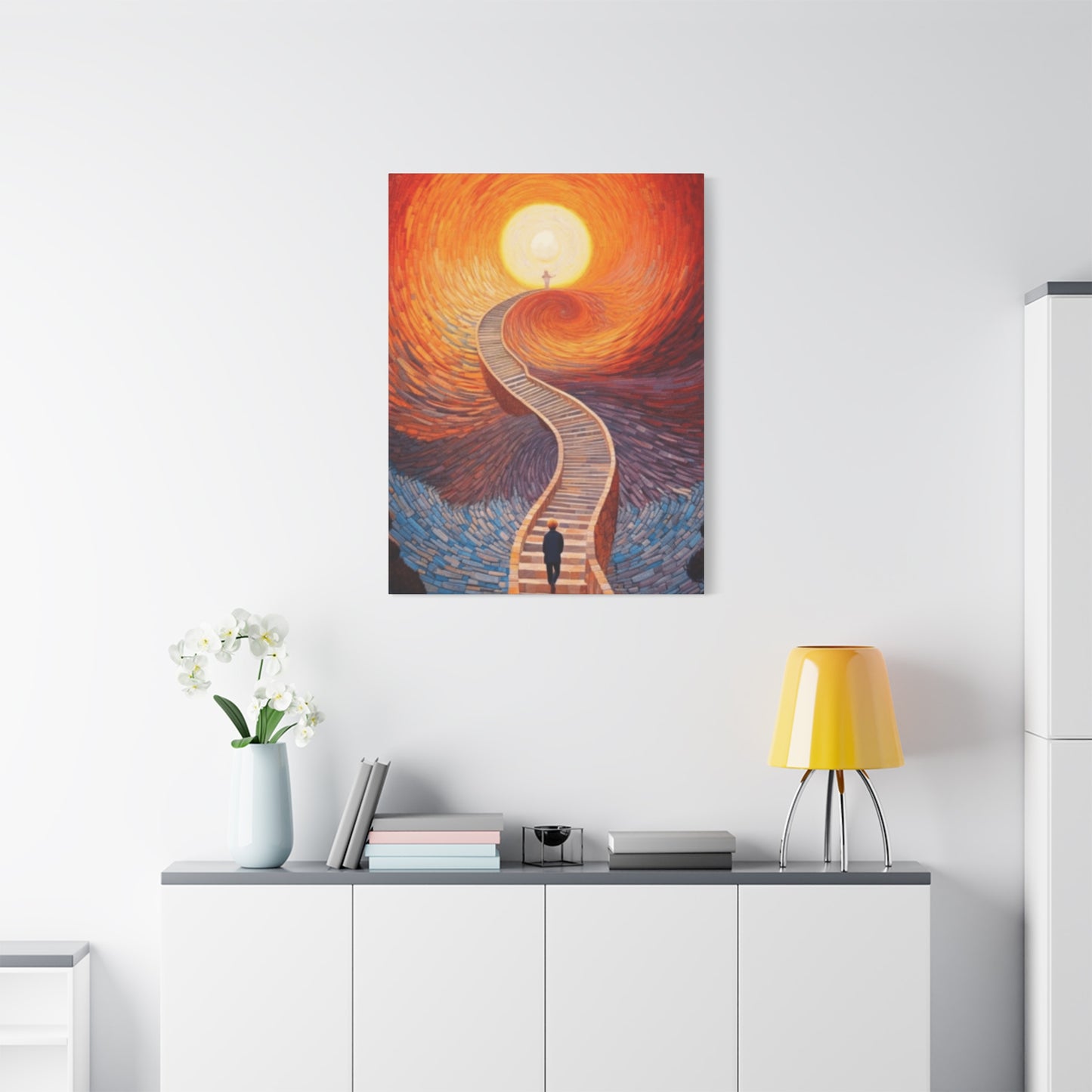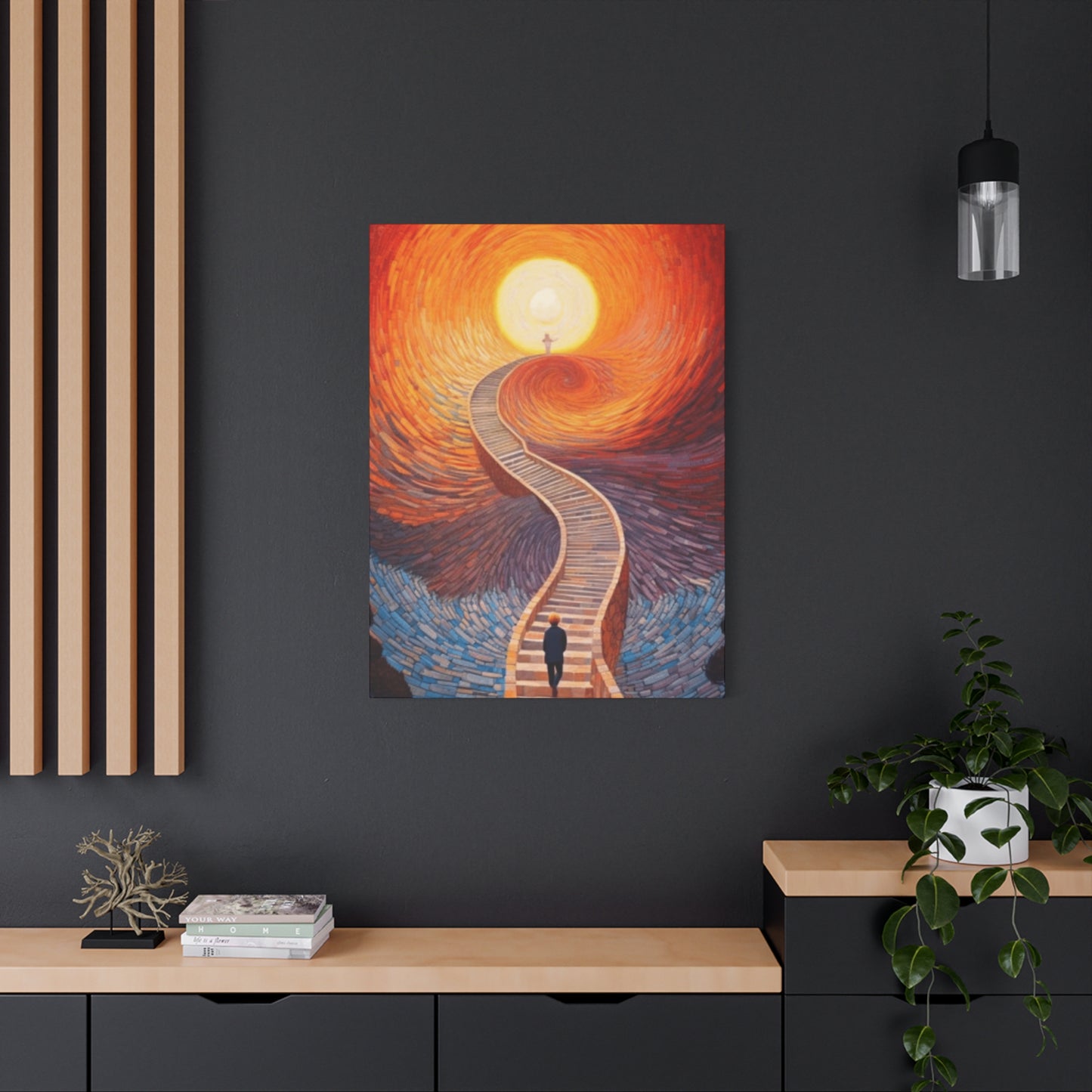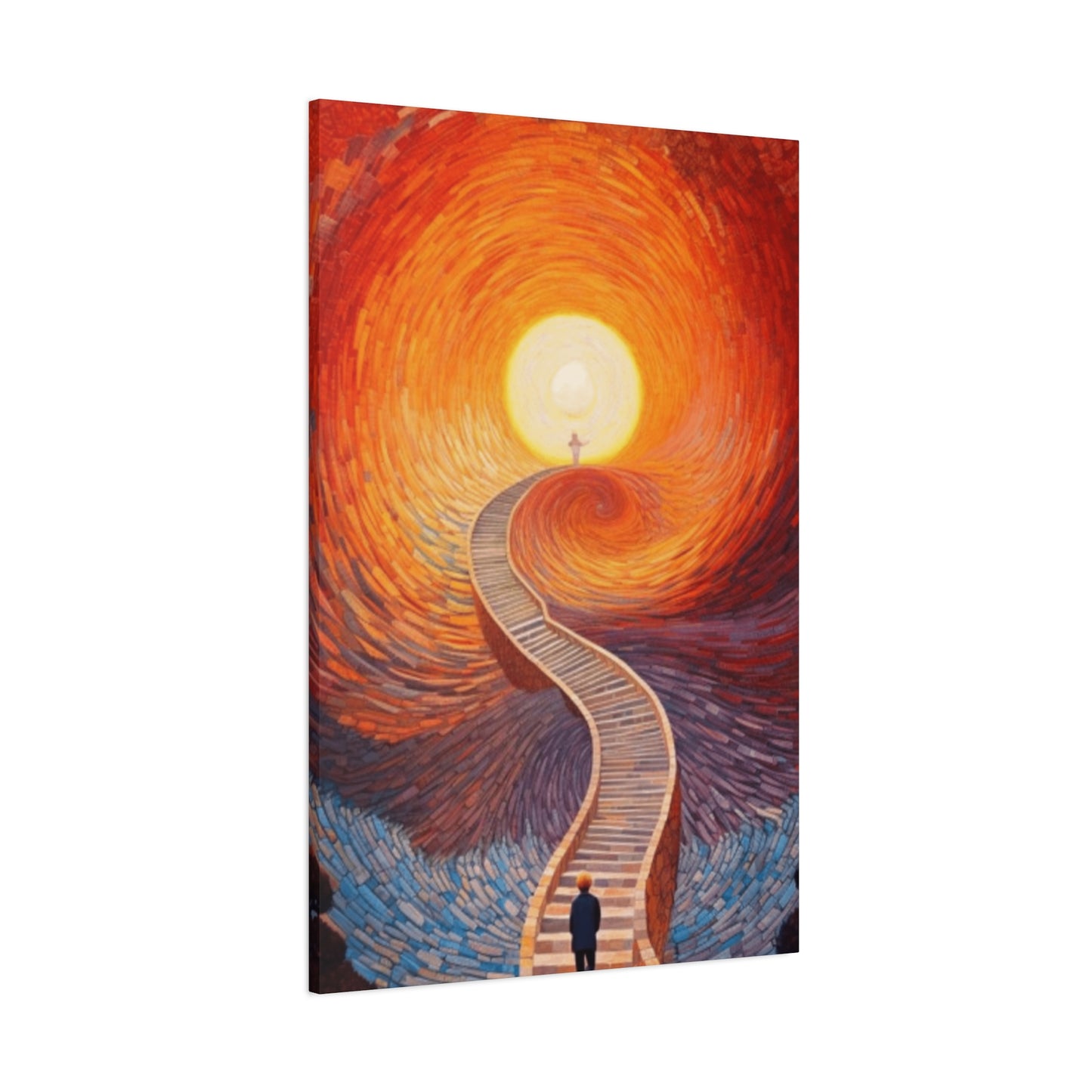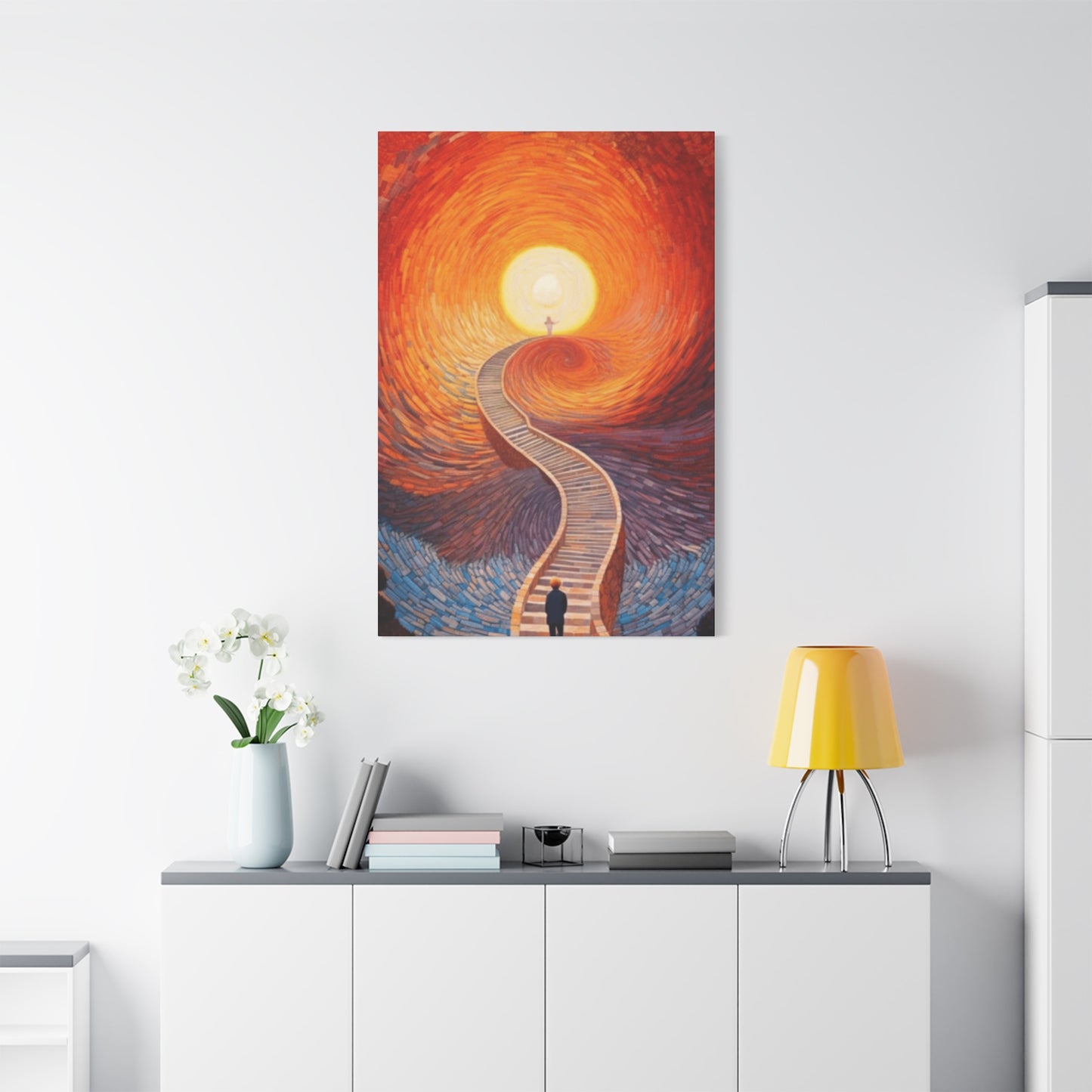Inspiring Dreams Through Wall Art Canvas Prints: A Journey to Personal Expression
Wall art canvas prints have revolutionized the way we approach home decoration and personal expression. These versatile artistic pieces offer endless possibilities for transforming any environment into a reflection of individual taste and personality. From abstract masterpieces to photographic reproductions, canvas prints provide an accessible medium for bringing professional-quality artwork into residential and commercial settings.
The evolution of canvas printing technology has made high-quality reproductions more affordable and accessible than ever before. Modern printing techniques ensure that colors remain vibrant and details stay sharp, creating pieces that can rival traditional paintings in visual impact. Whether you're drawn to contemporary designs or classic reproductions, canvas prints offer durability and aesthetic appeal that makes them an excellent investment for any decorating project.
The Art of Canvas Print Production Methods
Canvas printing represents a sophisticated blend of traditional artistic techniques and modern digital technology. The process begins with high-resolution digital files that capture every nuance of the original artwork. Professional-grade printers use specialized inks that penetrate canvas fibers, creating long-lasting impressions that resist fading and wear.
The foundation of quality canvas printing lies in the selection of appropriate materials. Premium canvas typically consists of cotton or polyester blends that provide optimal ink absorption while maintaining structural integrity. The weaving pattern of the canvas affects the final appearance, with finer weaves producing smoother surfaces ideal for detailed images and coarser weaves adding texture that enhances artistic expression.
Stretching techniques play a crucial role in the final presentation of canvas prints. Professional stretching ensures that the printed surface remains taut without warping or sagging over time. The wooden frame, typically made from kiln-dried pine or similar materials, provides the structural support necessary for maintaining the canvas's shape and tension.
Quality control measures throughout the production process ensure consistency and excellence in every finished piece. Color calibration systems match printed output to original artwork specifications, while inspection procedures identify and eliminate defects before products reach customers. These systematic approaches to quality management have elevated canvas printing from a novelty service to a professional artistic medium.
Choosing Perfect Themes for Your Canvas Displays
Selecting appropriate themes for canvas prints requires careful consideration of both personal preferences and environmental factors. Abstract designs offer versatility that complements various decorating schemes while providing visual interest without overwhelming existing elements. These non-representational works can evoke emotions and create focal points that enhance the overall aesthetic of any room.
Nature-inspired themes bring outdoor beauty indoors, creating connections with the natural world that can reduce stress and promote relaxation. Landscape photography, botanical illustrations, and wildlife portraits offer opportunities to introduce color palettes and textures that reflect seasonal changes or geographic preferences. These themes work particularly well in areas where people gather, such as living rooms and dining areas.
Cultural and historical themes provide educational value alongside aesthetic appeal. Reproductions of famous paintings, historical photographs, and cultural artifacts can spark conversations while demonstrating appreciation for artistic heritage. These selections work especially well in formal settings such as offices, libraries, and study areas where intellectual engagement is valued.
Personal photography transformed into canvas prints creates deeply meaningful displays that celebrate individual experiences and relationships. Family portraits, travel memories, and significant life events become permanent installations that tell personal stories. These custom pieces often become treasured possessions that gain sentimental value over time.
Contemporary and modern artistic themes appeal to those seeking cutting-edge aesthetic expressions. Digital art, geometric patterns, and experimental compositions reflect current artistic movements while making bold statements about personal taste. These selections work well in modern architectural settings where clean lines and innovative designs are emphasized.
Room-Specific Canvas Selection Strategies
Living room canvas selections should consider the room's primary functions and traffic patterns. Large statement pieces work well above sofas or mantels, creating focal points that anchor furniture arrangements. Multiple smaller pieces can be arranged in gallery walls that provide visual interest without overwhelming conversational areas. Color coordination with existing furnishings ensures cohesive design integration.
Bedroom canvas choices should promote relaxation and personal comfort. Soft, muted color palettes and peaceful imagery support restful environments. Abstract designs in calming colors can provide visual interest without creating stimulating distractions that might interfere with sleep. Personal photographs or meaningful artwork can create intimate atmospheres that reflect individual personalities.
Kitchen and dining area selections should complement the social nature of these locations. Food-related imagery, still life compositions, and vibrant colors can enhance appetites and create welcoming environments for meals and gatherings. Water-resistant coatings protect canvas prints from humidity and cooking vapors that could otherwise damage standard materials.
Home office canvas choices should balance professionalism with personal expression. Inspirational quotes, abstract designs, and sophisticated color schemes can create motivating work environments while maintaining appropriate business aesthetics. Avoid overly personal or distracting imagery that might interfere with productivity or professional video calls.
Bathroom canvas selections require special consideration for humidity and moisture exposure. Sealed or specially treated canvases resist moisture damage while providing artistic elements in typically utilitarian areas. Abstract designs and nature themes work well in these intimate environments without creating inappropriate or uncomfortable atmospheres.
Children's room canvas prints should be age-appropriate while encouraging creativity and learning. Educational themes, favorite characters, and bright colors create engaging environments that support development and play. Consider adjustable hanging systems that allow artwork changes as children grow and their interests evolve.
Size Considerations for Maximum Visual Impact
Understanding proportional relationships between canvas prints and wall dimensions ensures balanced compositions that enhance rather than overwhelm existing architecture. The golden ratio principle suggests that artwork should occupy approximately two-thirds of available wall area above furniture pieces. This guideline creates harmonious relationships between art and functional elements.
Large format prints make dramatic statements that work well in expansive areas with high ceilings and minimal competing visual elements. These oversized pieces can anchor furniture groupings and create impressive focal points that define room characters. However, careful consideration of viewing distances ensures that details remain visible and compositions stay coherent.
Medium-sized prints offer versatility that suits most residential applications. These dimensions allow for detailed viewing while providing sufficient visual weight to complement standard furniture proportions. Multiple medium prints can be arranged in various configurations to create custom gallery walls that adapt to changing preferences.
Small format prints work best in intimate settings or as part of larger compositions. These pieces excel in areas where detailed viewing is possible, such as reading nooks, bedside displays, or powder room installations. Their modest scale makes them ideal for experimental arrangements and frequent repositioning.
Triptych and multi-panel displays create dynamic presentations that can span large wall areas while maintaining visual cohesion. These arrangements offer flexibility for customizing installations to fit specific architectural features while providing opportunities for creative expression through varied compositions.
Custom sizing options allow for perfect fits in challenging architectural situations. Unusual wall dimensions, sloped ceilings, and architectural details can be accommodated through made-to-measure prints that maximize available display areas while respecting structural limitations.
Color Psychology in Canvas Art Selection
Understanding color psychology principles helps create environments that support desired moods and activities. Warm colors such as reds, oranges, and yellows stimulate energy and conversation, making them excellent choices for social areas like living rooms and dining rooms. These hues can create cozy, welcoming atmospheres that encourage interaction and engagement.
Cool colors including blues, greens, and purples promote relaxation and contemplation. These shades work particularly well in bedrooms, bathrooms, and study areas where calm, focused energy is beneficial. Blue tones have been shown to reduce blood pressure and heart rate, making them ideal for stress-relief environments.
Neutral colors provide sophisticated backgrounds that complement existing decorating schemes without competing for attention. Gray, beige, and cream tones offer timeless appeal that adapts to changing trends and preferences. These versatile options work well in professional settings where understated elegance is preferred.
Monochromatic color schemes create cohesive, sophisticated appearances using various shades of single colors. These approaches demonstrate artistic restraint while providing sufficient visual interest through textural variations and tonal contrasts. Black and white prints offer classic appeal that never goes out of style.
Complementary color combinations create dynamic visual tension that energizes compositions. Opposite colors on the color wheel naturally create vibrant contrasts that draw attention and create memorable impressions. These bold approaches work well in contemporary settings where dramatic impact is desired.
Analogous color schemes use neighboring colors on the color wheel to create harmonious, peaceful compositions. These gentle transitions between related hues create soothing effects that promote relaxation and comfort. Such approaches work well in therapeutic environments or areas designated for rest and recovery.
Framing and Mounting Techniques for Canvas Prints
Gallery wrap mounting techniques stretch printed canvas around wooden frames, creating clean, modern presentations that eliminate the need for additional framing. The image extends around frame edges, creating seamless appearances that work particularly well with contemporary decorating styles. This mounting method offers cost-effective solutions while maintaining professional aesthetics.
Traditional framing approaches encase canvas prints within decorative frames that complement or contrast with artwork styles. These presentations offer opportunities to coordinate with existing room elements while providing additional protection for canvas surfaces. Frame selections can dramatically alter artwork appearances and integration with surrounding environments.
Floating frame techniques create the illusion that canvas prints hover within frame boundaries. These sophisticated presentations combine the clean lines of gallery wraps with the finished appearance of traditional framing. The resulting displays offer contemporary aesthetics while maintaining formal presentation qualities.
Multi-piece mounting systems allow for creative arrangements using multiple related prints. These installations can span large wall areas while maintaining thematic coherence through consistent mounting techniques and proportional spacing. Such approaches offer flexibility for future rearrangements and additions.
Professional mounting services ensure proper installation techniques that protect both artwork and wall surfaces. Proper wall anchors, level placement, and secure hanging systems prevent damage while ensuring long-term stability. Professional installers can accommodate challenging wall materials and architectural features that might complicate standard hanging procedures.
DIY mounting approaches offer cost savings for those comfortable with basic installation procedures. Quality hanging hardware and careful measurement techniques can produce professional results while allowing for personal satisfaction and customization. However, valuable or heavy pieces may benefit from professional installation services.
Maintenance and Care for Canvas Artwork
Regular dusting using soft, dry brushes removes surface accumulations that could otherwise embed in canvas textures. Gentle circular motions starting from the center and working outward prevent streaking while ensuring thorough cleaning. Avoid moisture or cleaning chemicals that could damage canvas fibers or printed surfaces.
UV protection measures prevent color fading that can occur with prolonged sunlight exposure. Window films, strategic placement away from direct light, and UV-protective coatings help preserve color integrity over time. These preventive measures are particularly important for pieces with sentimental or monetary value.
Humidity control protects canvas materials from expansion and contraction that could cause warping or cracking. Maintain consistent indoor humidity levels between 30-50% using dehumidifiers or humidifiers as seasonal conditions require. Avoid placement near heat sources or areas with extreme temperature fluctuations.
Storage techniques for rotating collections require careful consideration of environmental factors. Flat storage prevents creasing while allowing air circulation around canvas surfaces. Protective coverings shield against dust accumulation and physical damage during storage periods.
Professional restoration services can address damage from age, accidents, or environmental factors. Trained conservators can repair tears, restore faded colors, and stabilize deteriorating materials. These services help preserve valuable pieces while maintaining their original artistic integrity.
Inspection routines identify potential problems before they become serious issues. Regular examinations for loose canvas, frame damage, or surface deterioration allow for timely interventions that prevent costly repairs. Document any changes through photography to track deterioration patterns.
Custom Canvas Printing Services
Personal photography conversion services transform digital images into professional-quality canvas prints. High-resolution scanning ensures maximum detail preservation while color correction optimizes final appearance. These services make personal memories into permanent artistic displays that celebrate individual experiences.
Corporate branding applications use canvas prints to reinforce business identities and create professional environments. Company logos, promotional imagery, and brand-consistent color schemes can be incorporated into office decorations that support marketing objectives while creating pleasant work environments.
Artistic collaboration services work with original artists to create limited edition reproductions. These partnerships allow artists to reach broader audiences while providing customers access to professional artwork at reasonable prices. Such collaborations often include artist signatures and certificates of authenticity.
Memorial and commemorative printing services create lasting tributes to important people and events. These sensitive applications require careful attention to image quality and presentation methods that honor subjects appropriately. Such pieces often become treasured family possessions that preserve important memories.
Educational institution applications use canvas prints to create inspiring learning environments. Historical imagery, scientific illustrations, and motivational messages can be incorporated into classroom and library decorations that support educational objectives while creating engaging atmospheres.
Wedding and special event documentation services preserve important celebrations through professional-quality prints. These applications often involve multiple images arranged in creative compositions that tell complete stories of significant occasions. Such pieces become permanent reminders of joyful moments.
Trends in Contemporary Canvas Art
Digital art reproductions have gained popularity as technology advances create new artistic possibilities. Computer-generated imagery, digital photography, and mixed media compositions offer contemporary aesthetics that appeal to modern sensibilities. These cutting-edge approaches reflect current technological capabilities while pushing artistic boundaries.
Environmental themes reflect growing awareness of ecological issues and sustainable living practices. Nature photography, conservation messages, and green color palettes appeal to environmentally conscious consumers while creating connections with natural world. These themes often incorporate recycled materials and eco-friendly production methods.
Minimalist approaches emphasize simplicity and negative areas that create calm, uncluttered appearances. These designs work well in contemporary architecture where clean lines and open areas are emphasized. Minimalist canvas prints complement modern lifestyles while providing sufficient visual interest without overwhelming environments.
Mixed media combinations incorporate various artistic techniques and materials into single compositions. These experimental approaches create unique textures and visual effects that cannot be achieved through traditional methods alone. Such innovations demonstrate the evolving nature of canvas printing technology and artistic expression.
Cultural fusion themes blend artistic traditions from different cultures and geographic regions. These approaches create unique aesthetic expressions that reflect globalization and cultural exchange. Such pieces often incorporate traditional patterns and motifs reinterpreted through contemporary techniques and presentations.
Interactive and smart canvas technologies integrate digital displays and responsive elements into traditional canvas presentations. These innovations create dynamic artworks that change over time or respond to environmental conditions. While still emerging, these technologies suggest future directions for artistic expression and home decoration.
Installation Planning and Professional Services
Wall assessment procedures evaluate structural capacity and surface conditions before installation planning begins. Load-bearing calculations ensure that walls can support intended artwork weights while surface preparation addresses any issues that might affect installation quality. These preliminary steps prevent problems and ensure successful installations.
Lighting design considerations optimize artwork visibility while preventing damage from excessive illumination. Proper angles, intensity levels, and lamp selections enhance artwork appearances while protecting against UV damage and heat exposure. Professional lighting consultations can maximize artistic impact while preserving canvas integrity.
Room layout planning integrates canvas installations with existing furniture and architectural features. Sight lines, traffic patterns, and functional requirements influence placement decisions that optimize both aesthetic and practical considerations. These comprehensive approaches ensure that artwork enhances rather than hinders room functionality.
Professional installation teams bring expertise and specialized equipment to complex projects. They can accommodate challenging wall materials, height requirements, and precision placement needs that might overwhelm DIY efforts. Professional services often include warranties and follow-up support that protect investments.
Project management services coordinate multiple installations across large facilities or multiple rooms. These comprehensive approaches ensure consistency in quality and appearance while managing timelines and budgets effectively. Such services are particularly valuable for commercial projects or extensive residential renovations.
Maintenance scheduling establishes regular care routines that preserve artwork conditions over time. Professional services can provide periodic inspections, cleaning, and minor repairs that extend canvas lifespans while maintaining appearance standards. These ongoing relationships help protect valuable collections.
Business Applications for Canvas Displays
Office environments benefit from carefully selected canvas prints that create professional atmospheres while reflecting company values and culture. Abstract designs, inspirational messages, and industry-relevant imagery can motivate employees while impressing visitors and clients. These installations contribute to workplace satisfaction and productivity.
Retail establishments use canvas displays to enhance shopping experiences and reinforce brand identities. Product photography, lifestyle imagery, and promotional graphics can be presented through canvas prints that withstand commercial environment demands while maintaining attractive appearances throughout busy shopping seasons.
Healthcare facilities incorporate calming, healing-focused imagery that supports patient recovery and staff morale. Nature scenes, abstract compositions, and peaceful color palettes create therapeutic environments that complement medical care objectives. These applications often require special consideration for infection control and durability requirements.
Hospitality businesses use canvas prints to create memorable guest experiences while establishing unique brand identities. Local imagery, cultural themes, and luxury presentations enhance accommodation and dining experiences while differentiating properties from competitors. These installations often require frequent updates and high durability standards.
Educational institutions use canvas displays to create inspiring learning environments that support academic objectives. Historical imagery, scientific illustrations, and motivational messages encourage student engagement while creating pleasant educational atmospheres. These applications often involve collaboration with educators and curriculum specialists.
Restaurant and entertainment venues use canvas prints to establish atmospheres that complement dining and entertainment experiences. Food photography, cultural themes, and artistic expressions create memorable environments that encourage repeat visits while supporting marketing objectives. These high-traffic applications require durable materials and easy maintenance procedures.
Advanced Printing Technologies and Materials
Eco-solvent printing technologies offer environmentally responsible production methods that reduce harmful chemical emissions while maintaining high quality standards. These approaches appeal to environmentally conscious consumers while meeting increasingly strict environmental regulations. Such technologies often produce longer-lasting prints with superior color retention.
Latex printing systems provide versatile solutions for various canvas materials and applications. These water-based systems offer excellent color reproduction while accommodating specialty materials that might not work with traditional printing methods. Latex inks often provide enhanced durability and fade resistance compared to conventional alternatives.
UV-curable printing technologies create instantly dry prints that resist moisture, fading, and physical damage. These rapid production methods allow for quick turnaround times while ensuring superior durability characteristics. UV inks often provide enhanced color saturation and detail reproduction compared to traditional printing methods.
Specialty canvas materials offer unique textures and characteristics that enhance artistic presentations. Textured surfaces, metallic finishes, and unusual fiber combinations create distinctive appearances that cannot be achieved through standard materials. These premium options often justify higher costs through superior aesthetic results.
Color management systems ensure accurate reproduction of original artwork colors across different printing systems and materials. Calibrated monitors, color profiles, and quality control procedures minimize color variations while maximizing consistency between original artwork and printed reproductions. These technical approaches ensure customer satisfaction and professional results.
Print resolution capabilities continue to improve as technology advances create opportunities for finer detail reproduction. Higher dot-per-inch specifications allow for larger print sizes while maintaining crisp detail and smooth color transitions. These improvements expand possibilities for architectural applications and detailed artwork reproduction.
International Artistic Influences on Canvas Design
Asian artistic traditions contribute minimalist aesthetics, natural themes, and philosophical concepts that influence contemporary canvas design trends. Traditional techniques such as sumi-e painting and zen garden principles translate well to modern canvas presentations while offering alternative approaches to visual expression and environmental harmony.
European classical influences bring centuries of artistic tradition to contemporary canvas applications. Renaissance techniques, baroque compositions, and impressionist color approaches provide sophisticated aesthetic foundations that appeal to traditional tastes while offering timeless design principles that transcend temporary trends.
African artistic traditions contribute bold patterns, vibrant colors, and cultural symbolism that create dynamic canvas presentations. Traditional textile designs, tribal art motifs, and contemporary African artistic movements offer unique aesthetic expressions that celebrate cultural diversity while providing visually striking decorative elements.
Latin American influences incorporate passionate colors, dynamic compositions, and cultural celebrations that enliven canvas presentations. Traditional folk art, contemporary muralism, and indigenous artistic traditions provide rich sources of inspiration for canvas designs that celebrate life, community, and cultural pride.
Middle Eastern artistic traditions contribute intricate patterns, geometric designs, and luxurious color palettes that create sophisticated canvas presentations. Islamic art principles, Persian carpet designs, and contemporary Middle Eastern artistic movements offer elegant aesthetic approaches that emphasize craftsmanship and cultural continuity.
Indigenous artistic traditions from various global regions contribute unique perspectives on natural relationships, spiritual concepts, and community values. These influences often emphasize environmental harmony and cultural preservation while providing distinctive aesthetic approaches that celebrate traditional knowledge and contemporary relevance.
Economic Aspects of Canvas Art Investment
Cost comparison analyses between canvas prints and original artwork reveal significant savings opportunities for budget-conscious decorators. High-quality reproductions offer professional aesthetic results at fractions of original artwork costs while providing flexibility for experimental decorating approaches and frequent changes without major financial commitments.
Investment potential considerations recognize that certain canvas prints may appreciate in value over time, particularly limited editions, artist collaborations, and historically significant reproductions. These appreciation possibilities create opportunities for combining aesthetic enjoyment with financial planning objectives.
Budget planning strategies help maximize decorating impact while managing expenses effectively. Phased purchasing approaches, seasonal sales timing, and bulk order discounts can reduce overall costs while allowing for comprehensive decorating projects that achieve desired aesthetic goals within financial constraints.
Quality versus cost evaluations help identify optimal purchase decisions that balance aesthetic desires with financial limitations. Understanding production differences, material variations, and service levels allows for informed decisions that maximize value while meeting specific application requirements and longevity expectations.
Professional appraisal services can evaluate canvas print collections for insurance, estate planning, and resale purposes. These expert assessments help establish accurate values while identifying pieces with particular significance or appreciation potential. Such services provide important documentation for valuable collections.
Market trend analyses help predict future value directions while identifying current opportunities for advantageous purchases. Understanding artistic movements, technological advances, and cultural preferences provides insights that inform strategic collecting and decorating decisions that balance immediate enjoyment with long-term value preservation.
Technology Integration and Smart Canvas Solutions
Digital display integration creates dynamic artworks that can change images, respond to environmental conditions, or provide interactive experiences. These technological advances expand possibilities for artistic expression while offering practical benefits such as remote control and automated updates that maintain fresh, engaging presentations.
Smart home integration allows canvas displays to coordinate with lighting systems, music players, and other environmental controls. These synchronized systems create immersive experiences that combine visual, auditory, and environmental elements into comprehensive artistic presentations that adapt to different occasions and preferences.
Mobile app controls provide convenient management of digital canvas systems while offering opportunities for easy image updates, color adjustments, and scheduling changes. These user-friendly interfaces make advanced technologies accessible to non-technical users while providing powerful customization capabilities.
Sensor integration enables canvas displays that respond to occupancy, lighting conditions, or time of day with appropriate image selections or display adjustments. These intelligent systems provide automated optimization while reducing energy consumption and extending display lifespans through adaptive management.
Cloud connectivity allows access to vast image libraries, automatic updates, and remote management capabilities that expand artistic possibilities while simplifying maintenance procedures. These connected systems offer ongoing value through continued access to new content and advanced features.
Artificial intelligence applications can analyze room characteristics, lighting conditions, and user preferences to recommend optimal image selections and display settings. These intelligent systems learn from user interactions while providing increasingly personalized recommendations that enhance satisfaction and engagement.
Seasonal Decorating with Canvas Art
Spring decorating themes celebrate renewal, growth, and fresh beginnings through canvas selections that emphasize light colors, floral imagery, and optimistic compositions. These seasonal approaches create environments that reflect natural cycles while providing opportunities for regular decorating updates that maintain interest and engagement.
Summer canvas selections often emphasize outdoor activities, vacation memories, and vibrant color palettes that reflect warm weather energy and recreational focus. These themes create environments that support relaxation and entertainment while celebrating seasonal pleasures and outdoor connections.
Autumn decorating approaches incorporate harvest themes, changing foliage, and warm color palettes that create cozy environments suitable for indoor activities and family gatherings. These seasonal transitions provide opportunities for creating intimate atmospheres that support traditional fall activities and celebrations.
Winter canvas themes often emphasize tranquility, reflection, and sophisticated color schemes that complement reduced daylight and indoor focus. These approaches create environments that support contemplation and comfort while providing visual warmth during cold weather periods.
Holiday-specific decorating allows for temporary canvas installations that celebrate particular occasions without permanent commitment to seasonal themes. Interchangeable systems make it practical to update displays for various celebrations while maintaining year-round aesthetic coherence through coordinated color schemes and presentation methods.
Transitional decorating strategies help bridge seasonal changes through canvas selections that work across multiple seasons while providing subtle variations that acknowledge natural cycles. These approaches reduce decorating workload while maintaining environmental responsiveness and aesthetic freshness.
Cultural Significance of Wall-Mounted Artistic Expression
Historical perspectives on wall decoration reveal long traditions of using artistic displays to communicate social status, cultural values, and personal identity. From cave paintings to contemporary installations, wall-mounted art has consistently served important social and psychological functions that continue to influence modern decorating practices.
Anthropological studies demonstrate universal human tendencies toward environmental personalization through artistic expression. These fundamental behaviors suggest that canvas art installations serve important psychological needs while providing opportunities for cultural communication and individual identity expression that transcend purely aesthetic considerations.
Social psychology research indicates that carefully selected artwork can influence mood, behavior, and social interactions within decorated environments. These findings suggest that canvas art selections carry responsibilities beyond aesthetic appeal while offering opportunities for positive environmental influence through thoughtful artistic choices.
Cultural preservation applications use canvas reproductions to maintain access to important artistic heritage while protecting original works from deterioration and damage. These conservation approaches ensure continued cultural transmission while making artistic treasures accessible to broader audiences through high-quality reproductions.
Cross-cultural communication opportunities arise when canvas displays incorporate artistic traditions from various global cultures. These inclusive approaches promote understanding and appreciation of cultural diversity while creating opportunities for meaningful conversations and learning experiences that transcend geographic boundaries.
Contemporary relevance of traditional artistic expressions demonstrates ongoing cultural continuity while adapting historical themes to modern contexts and presentation methods. These approaches honor artistic heritage while maintaining relevance to contemporary audiences through updated technologies and presentation techniques.
Environmental Considerations in Canvas Production
Sustainable material sourcing practices minimize environmental impacts while maintaining quality standards through careful selection of renewable fibers, recycled content, and responsibly harvested wooden frame materials. These approaches appeal to environmentally conscious consumers while supporting broader sustainability objectives.
Production process optimization reduces energy consumption, waste generation, and harmful emissions through efficient manufacturing techniques and clean technology adoption. These improvements often result in cost savings that can be passed to consumers while demonstrating corporate environmental responsibility.
Packaging innovations reduce waste while protecting products during shipping and storage. Recyclable materials, minimal packaging designs, and efficient sizing help minimize environmental impacts while maintaining product protection standards. These approaches often provide cost savings alongside environmental benefits.
End-of-life considerations address disposal and recycling options for canvas prints that have reached the end of their useful lives. Material separation techniques, recycling programs, and biodegradable options help minimize landfill impacts while supporting circular economy principles.
Carbon footprint reduction strategies address transportation, energy consumption, and material sourcing impacts through local production, renewable energy adoption, and efficient logistics management. These comprehensive approaches minimize overall environmental impacts while often providing economic benefits.
Certification programs provide third-party verification of environmental claims while helping consumers make informed purchasing decisions. These standards ensure accountability while driving continued improvements in environmental performance throughout the canvas printing industry.
Future Innovations in Canvas Art Technology
Nanotechnology applications promise enhanced durability, self-cleaning surfaces, and improved color retention through molecular-level material modifications. These advanced technologies could dramatically extend canvas lifespans while reducing maintenance requirements and improving long-term value propositions.
Biotechnology developments explore living materials and bio-responsive elements that could create dynamic artworks that change over time or respond to environmental conditions. These emerging technologies suggest possibilities for truly alive artistic expressions that blur boundaries between natural and artificial systems.
Holographic and three-dimensional display technologies could create canvas presentations with apparent depth and movement that exceed traditional two-dimensional limitations. These innovations would expand artistic possibilities while creating more engaging and immersive viewing experiences.
Augmented reality integration could overlay digital information or animated elements onto static canvas prints, creating hybrid experiences that combine physical and digital artistic expressions. These technologies could provide educational content, interactive features, or personalized experiences that adapt to individual viewers.
Advanced material science research explores new fiber compositions, surface treatments, and structural innovations that could improve canvas performance while reducing environmental impacts. These developments could lead to superior products that meet evolving consumer expectations and environmental requirements.
Artificial intelligence applications in artistic creation could generate personalized artwork based on individual preferences, room characteristics, and behavioral patterns. These intelligent systems could create unique pieces that optimize aesthetic appeal while ensuring perfect integration with specific environments and personal tastes.
Psychological Benefits of Curated Visual Environments
Stress reduction benefits of carefully selected canvas art have been documented through numerous studies that demonstrate measurable decreases in cortisol levels and blood pressure among individuals exposed to calming artistic imagery. These physiological responses suggest that canvas selections can contribute meaningfully to health and wellness objectives.
Creativity stimulation occurs when environments include varied artistic expressions that challenge conventional thinking and inspire new perspectives. Canvas displays that incorporate abstract designs, unexpected color combinations, or thought-provoking imagery can encourage creative problem-solving and innovative thinking in viewers.
Emotional regulation support comes from canvas selections that promote desired emotional states through color psychology, subject matter, and compositional techniques. These environmental influences can help maintain positive outlooks while providing comfort during difficult periods through consistent exposure to uplifting imagery.
Memory enhancement benefits arise when canvas displays incorporate personally meaningful imagery or culturally significant themes that strengthen cognitive connections and emotional engagement. These memory-supporting environments can improve overall mental acuity while creating lasting positive associations with physical locations.
Social connection facilitation occurs when canvas selections provide conversation starters, shared cultural references, or collaborative viewing experiences that bring people together. These social benefits contribute to overall well-being while strengthening relationships and community bonds through shared aesthetic experiences.
Personal identity expression through canvas art selections allows individuals to communicate values, interests, and personality characteristics to visitors while reinforcing self-concept and personal satisfaction. These identity-supporting functions contribute to psychological well-being while creating environments that feel authentically personal and comfortable.
Global Market Trends and Consumer Preferences
Regional preference variations reflect cultural differences, climate considerations, and architectural traditions that influence canvas art selections across different geographic markets. Understanding these regional patterns helps manufacturers and retailers optimize product offerings while respecting local aesthetic traditions and preferences.
Demographic analysis reveals generational differences in canvas art preferences, with younger consumers often favoring contemporary themes and digital artwork while older demographics may prefer traditional subjects and classical artistic styles. These insights inform marketing strategies while ensuring product diversity that serves varied customer segments.
Price sensitivity studies indicate consumer willingness to invest in quality canvas prints while demonstrating clear preferences for value-oriented purchasing decisions. These findings guide pricing strategies while identifying opportunities for premium products that justify higher costs through superior quality or unique features.
Online purchasing trends show increasing consumer comfort with buying canvas art through digital channels, supported by improved product photography, virtual reality previewing, and generous return policies that reduce purchasing risks while expanding market reach beyond geographic limitations.
Customization demand continues growing as consumers seek personalized artistic expressions that reflect individual tastes and specific environmental requirements. This trend drives development of user-friendly customization tools while creating opportunities for premium pricing through personalized service offerings.
Sustainability preferences increasingly influence purchasing decisions as environmentally conscious consumers seek products that align with personal values while maintaining aesthetic and quality standards. These preferences drive innovation in sustainable materials and production methods while creating competitive advantages for environmentally responsible manufacturers.
Professional Development in Canvas Art Industries
Career opportunities within the canvas art industry span creative, technical, and business functions that offer diverse paths for professional growth and specialization. From artistic design to production management to customer service, the industry provides varied opportunities for individuals with different skills and interests.
Skill development requirements include technical knowledge of printing processes, artistic understanding of design principles, and business awareness of market trends and customer needs. Continuing education programs help professionals stay current with evolving technologies while building expertise that supports career advancement.
Industry certification programs provide standardized training and assessment that helps professionals demonstrate competency while helping employers identify qualified candidates. These programs often combine technical knowledge with practical experience requirements that ensure comprehensive preparation for industry responsibilities.
Entrepreneurial opportunities exist for individuals seeking to establish independent canvas printing businesses, artistic services, or related enterprises. These opportunities often require combinations of creative, technical, and business skills while offering potential for significant personal and financial rewards through successful business development.
Technology integration requirements increasingly demand that industry professionals understand digital systems, automated production methods, and customer interface technologies. These technical capabilities become essential for competitive performance while creating opportunities for specialized expertise and leadership roles.
Collaboration opportunities with artists, decorators, and other creative professionals provide networking possibilities while creating synergistic relationships that benefit all participants. These partnerships often lead to referral business, collaborative projects, and mutual learning opportunities that support professional growth and business development.
Conclusion
Wall art canvas prints represent far more than simple decorative elements; they embody a sophisticated fusion of artistic expression, technological innovation, and personal identity that transforms ordinary environments into extraordinary reflections of individual taste and cultural appreciation. Throughout this comprehensive exploration, we have discovered the remarkable versatility and accessibility that canvas prints offer to anyone seeking to enhance their surroundings with meaningful artistic expression.
The evolution of canvas printing technology has democratized access to high-quality artwork, making it possible for people from all economic backgrounds to enjoy museum-quality reproductions and original digital creations in their homes and workplaces. This technological advancement has not only preserved artistic heritage through accurate reproductions but has also created new possibilities for contemporary artistic expression through digital media and innovative printing techniques.
The psychological benefits of thoughtfully curated visual environments cannot be overstated. Research consistently demonstrates that well-chosen canvas art contributes to stress reduction, creativity stimulation, and overall well-being while providing opportunities for personal expression and cultural communication. These benefits extend beyond individual satisfaction to encompass social connections, educational opportunities, and community building through shared aesthetic experiences.
Environmental considerations increasingly influence both production methods and consumer choices, driving innovations in sustainable materials, responsible manufacturing processes, and end-of-life disposal options. These developments reflect growing awareness of environmental responsibilities while demonstrating that aesthetic beauty and environmental stewardship can coexist harmoniously through thoughtful design and production practices.
The future of canvas art promises exciting developments through emerging technologies such as digital integration, smart systems, and advanced materials that will expand possibilities for artistic expression while maintaining the fundamental appeal of physical artwork that engages viewers through direct visual experience. These innovations will likely enhance rather than replace traditional canvas presentations while opening new avenues for creative expression.
As we have seen throughout this exploration, the selection, installation, and maintenance of canvas art requires careful consideration of numerous factors including room characteristics, personal preferences, budget constraints, and long-term objectives. However, the rewards of this thoughtful approach include environments that support personal well-being, reflect individual identity, and provide lasting satisfaction through continued visual enjoyment and emotional connection.




















